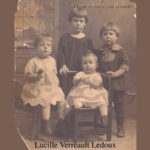We'd love to have you access this content. It's in our members-only area, but you're in luck: becoming a member is easy and it's free.
Already a Member?
Not a Member Yet?
Do you wonder how best to organize your memoir? Eventually, after you have written awhile, you will likely have amassed a number of vignettes, story segments, and stories. You will want to organize your memoir to make a statement, a bigger picture. How will you do it? Below are four ideas for organizing your memoir.
Eventually, after you have written awhile, you will likely have amassed a number of vignettes, story segments, and stories and wonder about how to best organize them into a coherent and interesting memoir. You will likely want to make a statement, o create a bigger picture of your story.
How will you do it? Well, one answer is that you will do it by how you organize your story. Below are four ideas to organize your memoir.
Remember: These suggestions do not refer to the sequence in which the stories are written but rather to how they can be ordered after they have been written.
Here are four ways you can organize your memoir.
1) Chronology
This post is one of over 500 informative, well-written articles we have made available to you on this site.
We’ve contributed to your writing success; now we ask you to contribute to the expansion of the memoir conversation.
By reposting this article on your blog or website or reposting on your favorite social media, you will inform your fellow memoir writers of the programs and services—many for free like the blogs—that are available at TheMemoirNetwork.com.
Thanks for your generosity. You rock.


No comments yet.